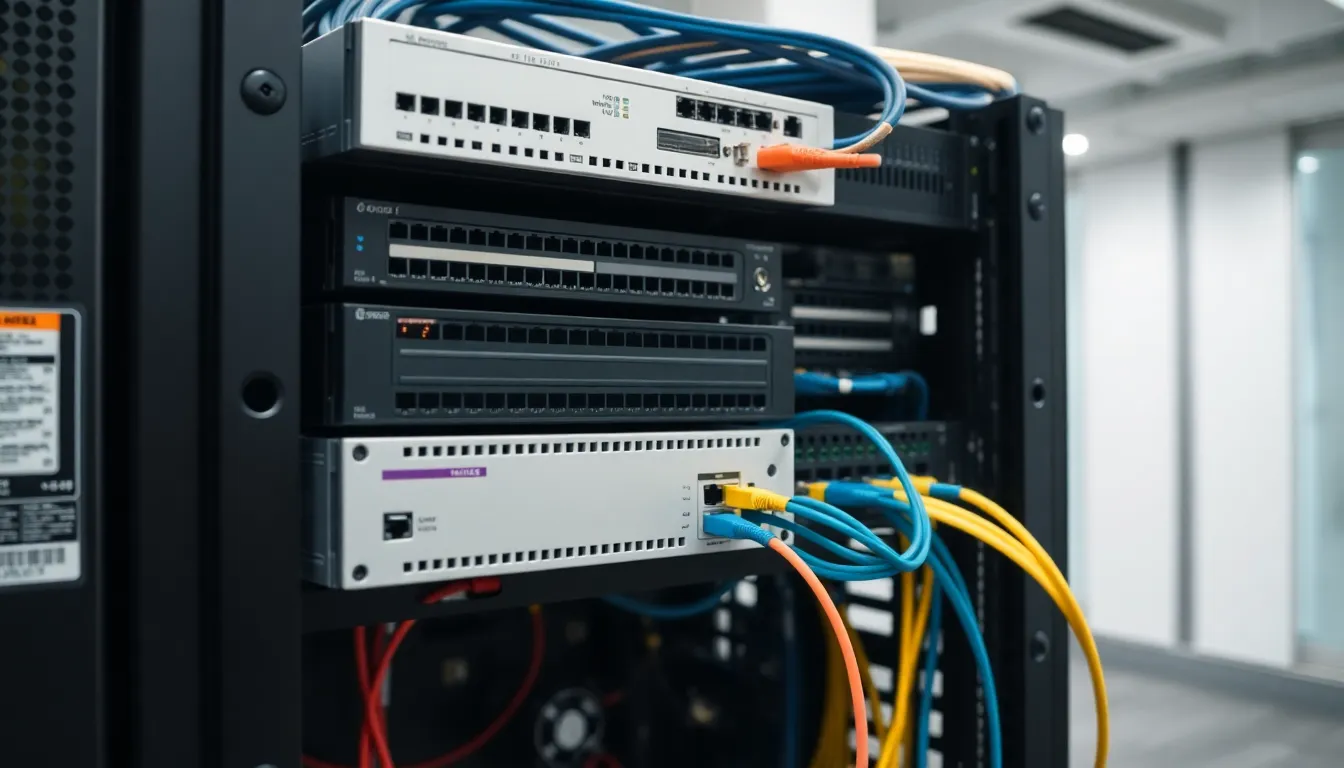In the vast world of IP addresses, 10.24.1.0.157 may not be the most glamorous, but it’s certainly got its quirks. This seemingly unassuming number holds the key to a treasure trove of networking secrets, and it’s time to unlock them. Whether you’re a tech whiz or just someone trying to navigate the digital landscape, understanding this address can bring you one step closer to mastering your network.
Table of Contents
ToggleOverview of 10.24.1.0.157
10.24.1.0.157 serves as a private IP address, primarily used in local networks. Understanding this address aids in navigating network configurations and management.
Definition and Significance
10.24.1.0.157 falls within the private IP address range designated by the Internet Engineering Task Force (IETF). This specific range encourages secure internal networking, minimizing exposure to external threats. For organizations, using this address simplifies routing schemes and network segmentation. Recognizing its role is vital for enhancing local area network (LAN) efficiency.
Common Uses and Applications
10.24.1.0.157 is often deployed in enterprise networks. Companies utilize it for internal communications among devices, ensuring seamless data transfer. Network administrators frequently assign this address to servers, printers, and workstations, streamlining resource access. Reliability in local environments stems from its configuration, reducing internet-related vulnerabilities. In virtual private networks (VPNs), this address type strengthens connectivity within secured tunnels.
Technical Specifications

This section provides detailed insights regarding the IP address 10.24.1.0.157, specifically addressing its type and associated subnet mask information.
Address Type
10.24.1.0.157 serves as a private IP address. It belongs to the Class A address range, which includes addresses from 10.0.0.0 to 10.255.255.255. Within this range, it primarily supports local networking needs by facilitating internal communications. Its private nature allows it to function within local area networks (LANs) without being routable on the public internet. As a result, security increases through minimized exposure to potential external attacks. Organizations commonly use this type of address for servers, printers, and workstations, ensuring efficient resource management and communication among devices.
Subnet Mask Information
The default subnet mask for 10.24.1.0.157 is generally 255.0.0.0. This configuration allows a significant number of hosts within the network, specifically accommodating over 16 million addresses. Such a large address space becomes practical for organizations needing extensive internal networking capabilities. Utilizing this subnet mask facilitates effective routing within local environments, promoting streamlined data flow across devices. Maintaining clarity in subnetting enhances overall network performance and simplifies administration tasks for IT professionals. By managing subnet sizes, networks can optimize resource utilization while maintaining security measures.
Performance Analysis
Performance analysis of the IP address 10.24.1.0.157 focuses on its speed and reliability in various networking scenarios. This address often excels in environments where internal communications are paramount.
Speed and Reliability
Speed remains a key attribute for any IP address. Devices utilizing 10.24.1.0.157 experience minimal latency due to its private status, reducing external data traffic interference. Reliability also defines this address, with stable connections sustained over long periods. Organizations that employ this address typically enjoy consistent performance, supporting simultaneous connections without degradation. Effective network management protocols further enhance speeds, allowing seamless data exchange among servers, printers, and workstations. IT professionals frequently report high satisfaction levels with both speed and reliability in local networks utilizing this IP address.
Comparison to Other IP Addresses
10.24.1.0.157 features distinct advantages compared to public IP addresses. Unlike public addresses, which expose devices to potential security threats, private addresses including this one maintain internal network protection. Organizations benefit from greater control over traffic management, minimizing exposure to external vulnerabilities. Additionally, addressing ranges like Class A provide extensive scalability, supporting up to 16 million addresses without encroaching on public networks. Devices connected to 10.24.1.0.157’s network typically display better performance characteristics than those relying solely on public addresses. Enhanced security measures safeguard internal communications, making this private address increasingly favorable for enterprise applications.
Security Considerations
The use of 10.24.1.0.157 entails certain security implications that warrant attention. Understanding potential vulnerabilities helps in fortifying network defenses.
Vulnerabilities Associated
Common vulnerabilities include unauthorized access and internal threats. Devices using this address can become targets for malicious actors if not properly secured. Misconfigurations might result in exposing sensitive data to unauthorized users. Additionally, inadequate network segmentation allows threats to traverse across devices within the same local area network. Attackers often exploit weak password protections on connected devices, increasing risks further. Regular monitoring becomes essential to detect anomalies or suspicious activities that could indicate breaches.
Best Practices for Security
Implementing robust security measures enhances protection for networks utilizing 10.24.1.0.157. Regularly updating firmware and software on all devices minimizes vulnerabilities. Employing strong password policies significantly reduces unauthorized access risks. Segmenting the network into smaller subnets adds an extra layer of control over data flow. Using firewalls to manage traffic ensures only legitimate connections pass through. Regular audits of network configurations help detect weaknesses and enforce security policies effectively. Incorporating an intrusion detection system provides critical monitoring for any irregular activities on the network.
Understanding 10.24.1.0.157 opens up a world of possibilities for both networking professionals and enthusiasts. Its role as a private IP address enhances security and streamlines local network operations. By leveraging its unique characteristics organizations can optimize their internal communications and improve resource management.
Emphasizing security is crucial when utilizing this address. Implementing best practices ensures that networks remain protected from potential threats. With proper configurations and vigilant monitoring 10.24.1.0.157 can serve as a robust backbone for enterprise networking. Embracing its advantages will undoubtedly lead to more efficient and secure digital environments.



